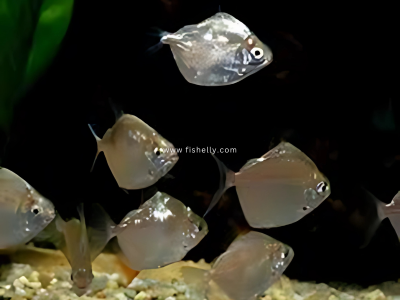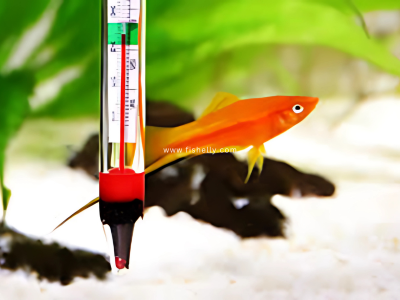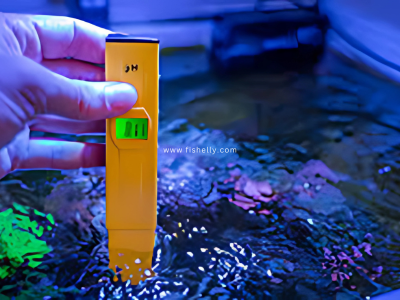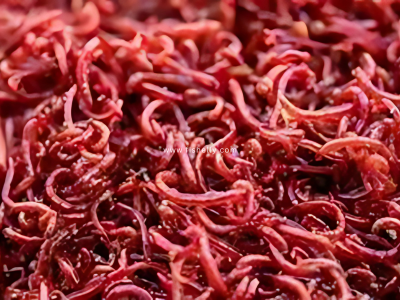Dollar Fish Care Guide: Tank Setup, Diet & Lifespan
Learn how to care for Dollar Fish, from tank setup and diet to lifespan and behavior. Keep these silver-colored fish healthy and thriving in your aquarium.
Table of Contents
- Native Habitat and Distribution
- Number of Species and Their Characteristics of Dollar Fish
- Lifespan and Survival
- Social Behavior and Living in Groups
- Breeding Process
- Tank Setup and Best Water Conditions
- Food Habits and Diet Plan
- Differences Between Males and Females Dollar Fish
- Interesting Facts About Dollar Fish
- Faq
- Conclusion
Dollar Fish are an interesting freshwater group of fish with their spectacular silver bodies, gentle temperament, and social behavior. They are part of the Characidae family and are essentially piranha-like in shape but totally peaceful. Dollar Fish are well loved within the aquarium hobby and are a perfect choice for fish enthusiasts who enjoy dynamic and lively fish.

Native Habitat and Distribution
Dollar Fish occur naturally in South America, particularly in sluggish rivers, floodplains, and dense cover. They are distributed in the Amazon and Orinoco basins that cover several countries such as Brazil, Venezuela, Peru, and Colombia. They live in warm, soft water with much plant cover, which offers them food and protection from predators.

Number of Species and Their Characteristics of Dollar Fish
There are approximately 20 known species of Dollar Fish, each with distinct characteristics. Some of the most common species are:
Silver Dollar Fish (Metynnis argenteus): The most sought-after species due to its entirely silver color and rounded body.

Spotted Silver Dollar (Metynnis lippincottianus): Has black spots all over its body, which creates an exciting pattern.

Red Hook Silver Dollar (Myloplus rubripinnis): Distinguished by the bright red color of its anal fin, a splash of red in the otherwise silver-colored tank.

While the majority of the species are nearly identical in shape, colors and patterns differ ever so slightly for each, thus making every individual distinct in outlook.
Lifespan and Survival
Dollar Fish can live for 10 years or longer when well taken care of in aquarium conditions. Their lifespan depends on various things, such as:
Proper Diet: A plant-based diet with occasional protein treats.
Stable Water Conditions: Clean water with proper pH and temperature.
Stress-Free Environment: A spacious tank with good filtration and adequate hiding spots.
These hardy fish can adapt to various conditions but require stable parameters to truly thrive.
Social Behavior and Living in Groups
Dollar Fish are schooling fish and like to exist in groups of five or more. Keeping them in groups has several advantages:
Security: They feel secure and are less stressed when kept in groups.
Natural Behavior: They are more active and interactive when kept in schools.
Aggression Reduced: Group environment avoids a single fish from being too dominant.
In the wild, Dollar Fish school in large groups to ward off predators and swim safely in open water.

Breeding Process
It is difficult to breed Dollar Fish in captivity but can be done with proper conditions. Here's what you should know:
Optimal Breeding Conditions: Soft water (78-82°F), warm water, and a well-planted aquarium.
Courtship Behavior: The male follows the female playfully before spawning.
Egg Laying: The female will lay eggs amidst plants, covering them well.
Hatching Time: Eggs incubate in 3-4 days, and the fry are fed a diet of infusoria or extremely fine fish food.
Providing plenty of plant cover and optimum water quality is paramount to breeding success.
Tank Setup and Best Water Conditions
In order for Dollar Fish to be healthy and happy, the setup of their tank is most important. These are their needs:
Tank Size: At least 75 gallons for a small colony.
Water Temperature: 75-82°F (24-28°C) to simulate their natural environment.

pH Level: 6.0-7.5, slightly acidic to neutral waters.

Substrate & Plants: Soft sand with lots of live plants to act as hiding places.

Filtration & Oxygenation: Powerful filter to ensure clean water and high oxygen.

Lighting: Moderate lighting to produce a natural and comfortable setup.

To supply these conditions in a large tank will make the Dollar Fish healthy and stress-free.
Food Habits and Diet Plan
Dollar Fish are plant-eating fish, hence herbivorous. Their diet should comprise:
Leafy Greens: Spinach, lettuce, and kale.

Vegetables: Zucchini, cucumbers, and peas.

High-Quality Pellets & Flakes: Specifically designed for herbivorous fish.

Occasional Protein: Bloodworms or brine shrimp as an occasional treat (not a main food).

A balanced diet keeps them healthy, colored, and full of life.
Differences Between Males and Females Dollar Fish
Males: Generally have a more pointed anal fin.

Females: Are more rounded in body, particularly when they are egg-laden.

These traits become more pronounced during breeding seasons.
Interesting Facts About Dollar Fish
• They are related to piranhas, but they are harmless and non-aggressive.
• Their silver scales reflect light, making them camouflage into their environment.
• They are great jumpers, so a secure lid on the tank is needed.
• They will graze algae in planted tanks.

Faq
1. What are Dollar Fish?
Peaceful freshwater fish with silver bodies, related to piranhas.
2. How long do they live?
Around 10+ years with proper care.
3. What tank size do they need?
75+ gallons for a small group.
4. Do they need to be in groups?
Yes, keep 5 or more to reduce stress.
5. What do they eat?
Leafy greens, veggies, herbivore pellets, occasional protein.
6. What water conditions do they need?
75-82°F, pH 6.0-7.5, strong filtration, live plants.
7. Can they live with other fish?
Yes, but only with peaceful species.
8. Do they jump?
Yes, a secure lid is necessary.
9. How to tell males from females?
Males: Pointed anal fin. Females: Rounder body.
10. Is breeding them easy?
No, but possible with warm, soft water and plants.
11. Do they eat algae?
Yes, they naturally graze on it.
12. Why is my fish losing color?
Stress, poor diet, or bad water quality.
13. Can they live alone?
No, they need a school to thrive.
14. Are they aggressive?
No, they are completely peaceful.
15. Are they good for beginners?
Yes, they are hardy and easy to care for.
Conclusion
Dollar Fish are a great option for aquarium hobbyists because they are pacifistic in nature, school together, and have a glistening silver color. With proper attention, a balanced diet, and a large tank, Dollar Fish can live for years and beautify your water system. Whether you are a novice or an old fish keeper, these intriguing silver gems are a great addition to any freshwater aquarium.
Got questions or tips? Drop them in the comments!






